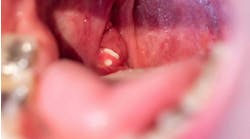I initially wanted to devote this space to complimenting the American Dental Hygienists’ Association for its teamwork with the Commission on Dental Accreditation over the past year or so. In early February, the ADHA and CODA agreed that a formal needs assessment should be required before authorizing the accreditation of a new dental hygiene program. In other words, does a geographic area with hundreds of unemployed hygienists really need another dental hygiene school that annually adds dozens of additional unemployed graduates to the local economy.
The agreement, according to the ADHA, is that they’re now going to calculate that figure.
As I write this, the information about the agreement was still sketchy. In addition, my mind was stuck with some “Has the damage already been done?” thoughts. I didn’t see any references, for example, to closing down dental hygiene schools in saturated areas.
Nevertheless, I want to compliment the ADHA for addressing this issue so persistently. The tide has been stemmed. We need to support the association as we move forward. Ask your ADHA representative to keep you updated about the agreement above in the coming months.
Before the breaking news, I was going to chat about statistics. There’s still some space left here. PennWell, the publisher of RDH, conducts a variety of surveys with all dental professionals. The RDH eVillage salary survey is one example familiar to many hygienists. I enjoy looking at these surveys, and here are some statistics from recent months:
- 60% of dental hygienists said they have been kept waiting during patient care due to a dentist or other staff member texting or engaging in social media. (January 2012)
- 77% of dental hygienists say patients have asked them if they can interrupt a procedure with a call on a cell phone. (November 2011)
- 46% of dental hygienists use social media outlets such as Twitter or Facebook to interact with other dental professionals. (September 2011)
- 45% of dental assistants say they have been trained at a CODA-accredited program, while 21% say they have been “primarily trained on the job.” Sixty-eight percent believe entry-level educational requirements for dental assistants are adequate. (December 2011)
- 36% of dental hygienists would describe themselves as “CE junkies,” earning far more CEUs than what is required for relicensure. (November 2011)
- 54% of dental hygienists attend one dental trade show or conference each year; an additional 22% said they attend two conferences each year. Of this group, 39% indicated that they prefer to earn CEUs at local seminars (including study clubs), and 22% prefer online options. (September 2011)
- The same statisitics for dentists were: 39% attend one dental conference each year; 35% attend two; and 14% average three a year. Forty percent prefer to earn CEUs at these conferences, while 28% prefer online options. (September 2011)
- The dollars and cents calculated by the RDH eVillage salary survey have been well-documented in the e-newsletter as well as in RDH. But some general demographic information culled from the 1,997 responses include: the highest level of education for 59% is an associate’s degree; that percentage drops to only 55% for those who have practiced dental hygiene for more than 20 years. Overall, 46% work four days a week; that figure drops just a little bit to 41% for the veterans of more than 20 years.
It’s always interesting to view the statistics of how dental professionals think.
Mark Hartley
[email protected]
Follow RDH on Facebook
Past RDH Issues





